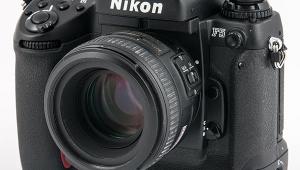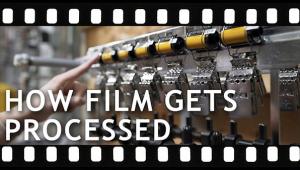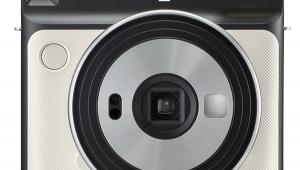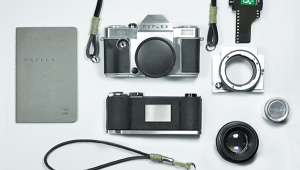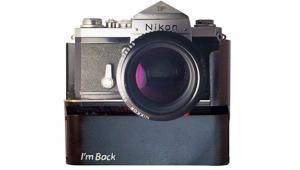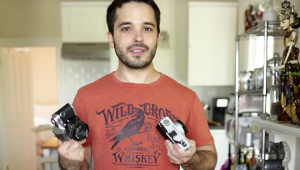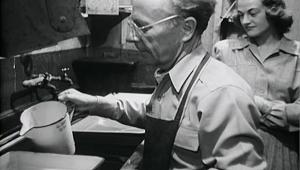Is Instant Film Photography Making a Comeback? How Fujifilm Has Sparked an Instant Revival
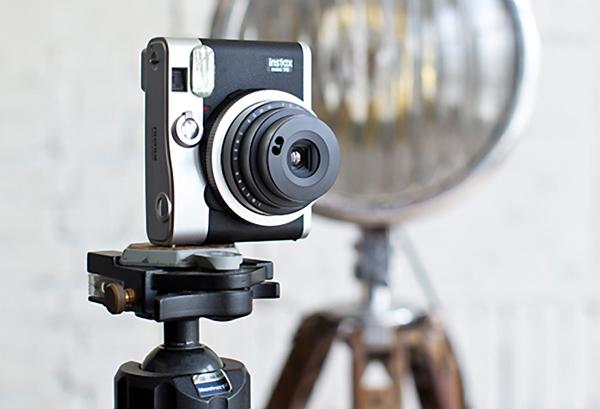
Instant photography is enjoying a resurgence among both young snapshooters and even some pros, with several makers — from established brands to startups — offering cameras and films to scratch that instant itch. Most photo buffs know the Polaroid story; how the company went bankrupt and is now operating as essentially a brand licensing company putting the Polaroid name on everything from TVs to Blu-Ray players to tablets to, yes, cameras and film.
True “Polaroid” instant film stopped production in 2008 but boutique makers like the Impossible Project have kept the dream alive with new formulations. Yet, one classic photo company kept its own dream alive all along by quietly introducing the fun of instant photography and prints to a whole new generation.
And while teenage girls are a huge segment of the market for Fuji’s Instax line, “serious” photographers have also taken note.

If you are surprised, don’t be. Fujifilm has had a long history in the instant photography business, even providing OEM manufacturing services for Polaroid back in the hey-day of instant photography. In the 1980s, Fujifilm was licensed by Polaroid to sell instant film under its own brand in Japan.
After Polaroid’s 2008 bankruptcy, Fujifilm began to export the product to North America and to Europe. By then, Fujifilm already had a decade of experience selling instant cameras to teenage girls in Japan.
Ten years earlier, the company developed the Instax format, similar in size to Polaroid’s Spectra format (though not compatible with Spectra cameras) with cameras called Instax Wide and a smaller version called the Instax Mini. It’s the Mini that’s gained popularity with casual snapshooters.

Initially it didn’t appear as though Instax was going to have a big impact on Fujifilm’s imaging business, but by 2014, Instax was specifically highlighted in company reports as a key profit center for the company’s photo segment.
How did this happen? Early on, Instax was marketed not only as a photography product, but as a lifestyle accessory. For the first four years, Fujifilm marketed pastel-colored cameras to teenage girls, building up annual sales to about 1 million units.
Then compact digital cameras and mobile phones became popular, hitting instant camera sales hard, to the point where Fujifilm considered discontinuing the product, according to the Wall Street Journal.

By 2007, however, Instax was featured on a South Korean TV drama, which lead to the company embracing non-traditional marketing. Fujifilm marketers realized there was an entire generation of snap shooters who had not held a print.
“Many young people have never used print cameras,” said Yoshitaka Nakamura, who oversees Fujifilm’s instant business, in a 2014 interview with The Japan Times. “For them, it is a fresh experience when the print comes out instantly after they snap a picture.”
To get the word out, Fujifilm overlooked the traditional camera market and reached out to fashion bloggers with colorful cameras and co-branding with popular brands like Hello Kitty. The cameras were made available in fashion boutiques, home décor outlets, and other channels of distribution that typically didn’t sell photo items
Since then, sales have expanded beyond Japan with worldwide sales now projected to be 6.5 million units this year. In the United States, you could not only find Instax cameras and film at Best Buy, but in other stores like Urban Outfitters, Wal-Mart and Michaels. Fujifilm also expanded into mobile Instax printers and higher-end cameras like the Instax WIDE 300 and the Instax mini 90 NEO CLASSIC.
 With the introduction of higher-end instant models, we are starting to see serious photographers take up the format. Instant photo tech has always had a place among artists, especially peel-apart packs where emulsions could be manipulated. Fujifilm also recently introduced "instax mini film monochrome," a black-and-white instant film for Instax cameras that goes on sale in October 2016 and is sure to appeal to more serious photographers. Pros like those at Photography Concentrate with Lauren & Rob use Instax prints during travel excursions and for wedding shoots.
With the introduction of higher-end instant models, we are starting to see serious photographers take up the format. Instant photo tech has always had a place among artists, especially peel-apart packs where emulsions could be manipulated. Fujifilm also recently introduced "instax mini film monochrome," a black-and-white instant film for Instax cameras that goes on sale in October 2016 and is sure to appeal to more serious photographers. Pros like those at Photography Concentrate with Lauren & Rob use Instax prints during travel excursions and for wedding shoots.
To see more work by professional photographers using Instax cameras take a look at this special Fujifilm site.
The remarkable success of Fujifilm's instant photography products has spurred other manufacturers to test the instant waters as well. Luxury camera brand Leica recently introduced the Sofort, a $300 instant camera which, you guessed it, also uses Fujifilm's Instax film packs.
In this day and age of climbing megapixel counts, flying camera drones, and high-tech virtual reality devices, it's both refreshing and slightly distressing to see instant film making a comeback. Whether it will continue to turn a profit for Fujifilm and other companies remains to be seen. But stay tuned: this is one (old) trend that doesn't seem like it's going away any time soon.
- Log in or register to post comments




